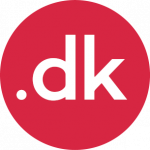.asia registry introduces registry lock for .asia domain names
The .asia registry now offers an extra form of security for your .asia domain name, namely the registry lock. This lock is an extra security layer that ensures that your .asia name is even better protected. If you decide to activate the registry lock for your name under the .asia extension, no update can be […]
Read more >Foreigners might loose their .dk domain name
Until recently, the Danish registry used to only verify contact information for registrants with an address in Denmark. In theory foreigners could also be verified, but this hardly ever happened. Any Danish registrant wanting to by-pass the verification, just needed to select a different country when registering their domain name. While that old way of […]
Read more >Relaunch .forum domain
The .forum registry has announced that there will be a relaunch of the .forum extension. Moreover, registering a .forum domain name will also become a lot cheaper due to this relaunch. The relaunch will start on April 12, 2023 and will start with a sunrise that will run until May 10, 2023. During this sunrise […]
Read more >.au domain names continue to do well
AuDA (the Australian registry) has published the figures for 2022. This shows that the release of the .au domain has certainly done the registry no harm. These figures show that about one in 6 Australian domain names is a .au domain name. Since March 2022 it is possible to register a name directly under the […]
Read more >.amsterdam registry introduces registry lock for .amsterdam domain names
NIC.amsterdam (.amsterdam-registry), who manages .amsterdam names now offers an extra form of security for your .amsterdam domain name, namely the registry lock. This lock is an extra security layer that ensures that your .amsterdam name is even better protected. If you decide to activate the registry lock for your name under the .amsterdam extension, no […]
Read more >


